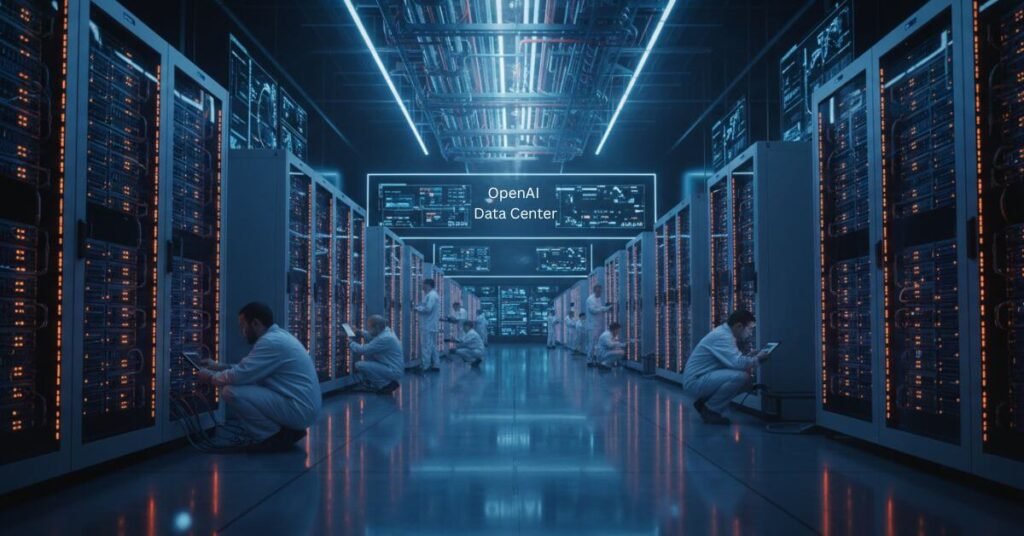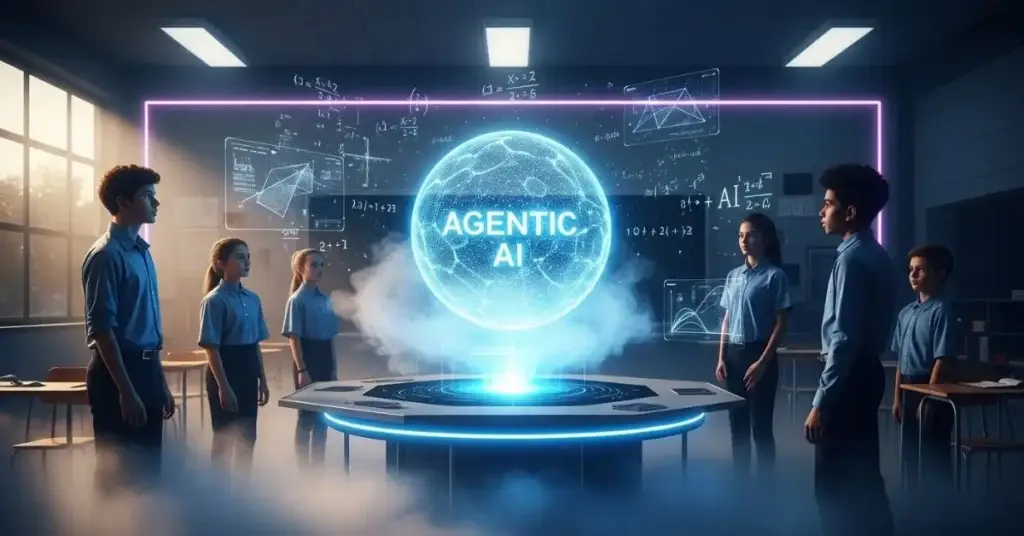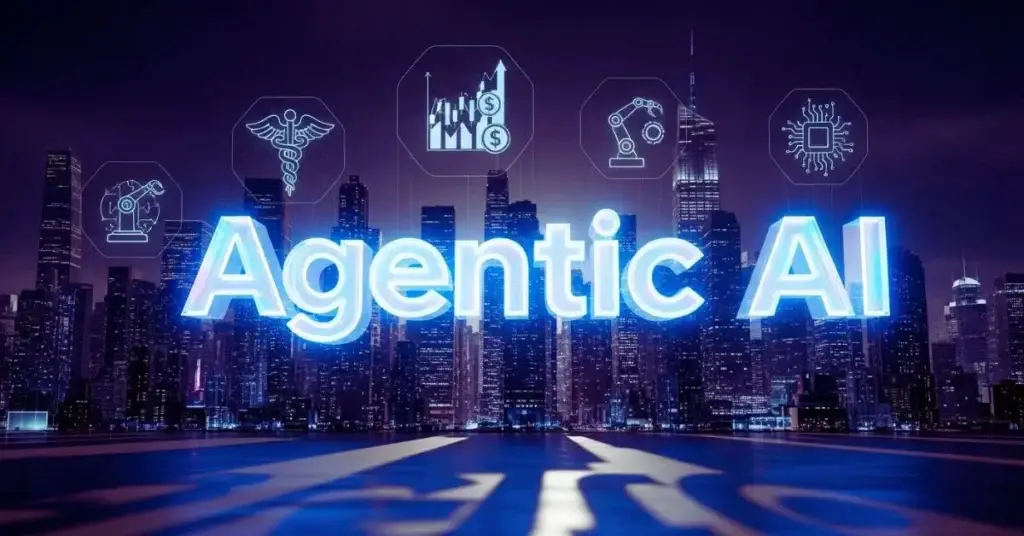
Summary
OpenAI is reshaping America’s technological landscape with an ambitious plan to build one of the largest AI infrastructures in history. Backed by Oracle, SoftBank, and other key partners, the company’s “Stargate Project” aims to construct multi-billion-dollar data centers across Michigan and Wisconsin while calling for a 100 GW energy expansion nationwide.
This move isn’t just about AI growth; it’s about power, geopolitics, jobs, and America’s leadership in the global AI race against China.
Introduction: The Rise of AI Infrastructure in the USA
The United States is entering a new industrial revolution, not powered by steel or oil, but by data and electricity. OpenAI, the creator of ChatGPT, is leading this charge by investing heavily in next-generation AI infrastructure. The company recently announced massive new data-center projects under its “Stargate Initiative,” in partnership with Oracle Corporation and Related Digital.
These projects, valued at over $500 billion, represent one of the largest tech infrastructure buildouts in modern history.
From creating jobs to redefining America’s power strategy, OpenAI’s vision goes far beyond technology; it’s about securing the country’s AI and energy future.
What Is the OpenAI Stargate Project?
| Key Detail | Description |
|---|---|
| Project Name | Stargate Initiative |
| Main Partners | OpenAI, Oracle Corporation, SoftBank Group, Related Digital |
| Estimated Investment | $500 Billion (Phased over 10+ Years) |
| Primary Locations | Michigan (Saline Township), Wisconsin (Port Washington) |
| Total Planned Capacity | 10 Gigawatts (GW) of AI Computing |
| Construction Start | 2026 (Michigan Campus) |
| Objective | Build large-scale AI data centers to power next-gen models and AGI systems |
The Stargate Project isn’t a single site; it’s a nationwide network of high-capacity data centers, optimized for AI model training, multimodal learning, and agentic AI operations. In simpler terms, this infrastructure will serve as the “brainpower backbone” for OpenAI’s future systems, beyond ChatGPT, enabling larger, faster, and more energy-intensive AI models.
Michigan and Wisconsin: America’s New AI Power Hubs

1. Michigan Campus (Saline Township)
- Capacity: >1 GW data-center campus
- Timeline: Construction begins early 2026
- Jobs Created: Around 2,500 union jobs
- Partners: Oracle + Related Digital + OpenAI
- Focus: AI cloud infrastructure, regional tech development, renewable integration.
This site will transform Michigan into a major hub for AI operations, boosting local economies through energy grid upgrades and workforce training.
2. Wisconsin Campus (Port Washington)
- Investment: $15 billion
- Structure: 4 large buildings covering several acres
- Capacity: Nearly 1 GW
- Additional Plans: $175 million allocated for local water and power infrastructure upgrades
- Purpose: Host high-density AI servers and cooling systems powered by renewable sources.
Together, these two mega-projects symbolize America’s determination to lead in AI, not just digitally, but also physically, through industrial-scale investments in energy and hardware.
Why Is Energy the New “AI Currency”?
OpenAI has publicly stated that electricity is now a strategic asset just as vital to the AI race as semiconductors or GPUs.
In a letter to U.S. regulators, the company urged the government to increase national power-generation capacity by 100 GW per year to support AI’s exponential energy demands.
This warning stems from a growing “electron gap” between the U.S. and China.
| Metric (2024) | USA | China |
|---|---|---|
| New Power Capacity Added | 51 GW | 429 GW |
| AI Infrastructure Growth Rate | Moderate | Extremely High |
| National AI Power Strategy | Emerging | Aggressive & State-Funded |
If the U.S. doesn’t bridge this gap, OpenAI warns, it may lose its global AI leadership to faster-moving nations with higher power generation.
The Logic Behind the 100 GW Expansion Plan
Why does AI need so much energy?
Because training next-generation LLMs and multimodal models consumes enormous computing power.
For example:
- GPT-4-level model training ≈ thousands of GPUs running for months.
- Agentic AI systems and real-time multimodal processing require continuous server uptime to ensure seamless operation.
- Future AGI models may require 100 times more computational capacity than GPT-4.
Thus, the OpenAI-Oracle-SoftBank consortium is investing not only in servers but in power plants, grids, and renewables to sustain AI’s future.
Advantages of OpenAI’s USA Infrastructure Expansion
1. Job Creation & Economic Growth
- Thousands of new skilled labor jobs (electricians, engineers, technicians).
- Regional economies (Midwest states) will experience construction booms and local tax benefits.
- Encourages STEM education and training programs for the future AI workforce.
2. Strengthened National Security
- Domestic AI infrastructure reduces dependency on foreign data processing.
- Protects U.S. data sovereignty and aligns with the Biden Administration’s AI safety & security policy.
3. Energy Modernization
- Pushes utilities toward renewable and nuclear solutions to meet power demand.
- Encourages grid modernization, battery storage, and smart energy innovation.
4. AI Competitiveness
- Provides U.S. companies with faster and more affordable access to advanced computing resources.
- Keeps America competitive against China’s state-backed AI growth.
Explore how Stargate AI Data Centers are powering the next wave of OpenAI and Oracle collaboration: Stargate AI Data Centers: OpenAI, Oracle, and SoftBank’s Game-Changing Partnership
Challenges and Disadvantages
1. Massive Energy Consumption
AI infrastructure is energy-hungry. Each hyperscale data center draws power equivalent to a small city. Without proper integration of renewable energy sources, it may stress existing power grids.
2. Environmental Concerns
Water cooling, land use, and emissions from non-renewable power sources could have environmental trade-offs unless mitigated with green technology.
3. High Capital Cost
A $500 billion initiative requires sustained investor confidence and government cooperation; any market downturn or policy shift could delay the projects.
4. Supply-Chain Pressure
Shortages of semiconductors, GPUs, transformers, and data-center components could slow construction timelines.
5. Uneven Regional Benefits
While Midwest states gain the most, other regions may experience little direct impact, raising concerns about policy and equity.
AI growth isn’t just about power , it’s changing careers across the U.S : Explore how AI is accelerating Big Tech layoffs in America.
USA vs China: The AI Energy Race
| Factor | United States | China |
|---|---|---|
| Power Generation Strategy | Market-Driven, Private Sector-Led | State-Driven, Centralized Planning |
| 2024 New Power Capacity | 51 GW | 429 GW |
| AI Infrastructure Investment | $500 B+ (OpenAI + Oracle + SoftBank) | ~$1 Trillion (Government Programs) |
| Renewable Integration | High Potential, Slow Adoption | Rapid Deployment of Solar & Nuclear |
| Data Sovereignty | Focus on Privacy & Security | State Control and Monitoring |
OpenAI’s latest call for “energy as a strategic asset” is a direct response to China’s massive head start.
The USA still leads in AI software and models, but without comparable energy and hardware capacity, it risks falling behind in real-world scalability.
Impact on the American Workforce and Economy
According to OpenAI’s “Seizing the AI Opportunity” report:
- The U.S. will need a 20% increase in the skilled trades workforce within 5 years to build and maintain AI infrastructure.
- Local contractors, universities, and apprenticeship programs will play a major role.
- Each new data center injects millions into local economies through wages, materials, and service demand.
This industrial AI expansion could mirror the post-World War II manufacturing boom, redefining America’s labor and energy economy for the next century.
Environmental and Sustainability Focus
OpenAI claims its long-term vision includes:
- Carbon-neutral data centers
- Integration of solar, nuclear, and hydro power
- Closed-loop water cooling systems to minimize environmental impact
- Collaboration with DOE (Department of Energy) for sustainable grid solutions
By treating energy not as a by-product but as a core pillar of AI development, OpenAI is shifting how Silicon Valley thinks about sustainability.
Expert Opinions and Industry Reactions
- Reuters called Stargate “one of the boldest technology-energy integrations ever attempted.”
- TechCrunch highlighted how OpenAI’s plan could reshape the U.S. energy market.
- Utility Dive noted growing concern over grid strain, especially during summer peaks.
- MIT Technology Review suggested this project might create a blueprint for global AI infrastructure design.
While the ambition excites policymakers, some economists warn that such mega-projects could inflate AI costs if energy bottlenecks persist.
Comparison: OpenAI’s Approach vs Other Tech Giants
| Company | Strategy | Scale & Focus |
|---|---|---|
| OpenAI | Partnering with Oracle, investing in energy + compute | 10 GW AI capacity goal |
| Google DeepMind | Focus on efficiency, sustainability | Uses AI to reduce data-center power by 30 % |
| Microsoft + NVIDIA | Heavy GPU investment for Azure AI cloud | ~$100 B data center budget |
| Anthropic | Smaller, targeted LLM training farms | Emphasis on AI alignment and safety |
| Amazon AWS | Expanding in Texas & Virginia for AI compute | Integrating renewables to support AI workloads |
OpenAI stands out because it’s the only AI lab directly calling for national-level energy expansion, treating electricity as strategic infrastructure, not a cost.
Future Outlook: What Comes Next
Over the next decade, OpenAI’s infrastructure vision could:
- Trigger a new energy-tech alliance between utilities and AI companies.
- Redefine America’s AI supply chain from chips → servers → energy generation.
- Inspire federal AI energy policies focusing on sustainable growth.
- Encourage local governments to create “AI zones” similar to tech parks.
If successful, Stargate could become the template for global AI infrastructure, positioning the U.S. as both a technological and energy superpower.
Conclusion
OpenAI’s massive infrastructure and energy strategy signals the next phase of America’s AI revolution.
By linking AI development with national energy policy, the company is forcing a fundamental rethink: the future of artificial intelligence isn’t just about algorithms, it’s about electricity, hardware, and industrial vision.
From Michigan’s billion-dollar campuses to calls for 100 GW of new power, OpenAI is rewriting how nations compete in the digital age.
The message is clear: whoever controls the power, controls the future of AI.
FAQs about OpenAI’s Massive USA Infrastructure Expansion 2025
Q1: What is OpenAI’s new infrastructure expansion in the USA?
Answer: OpenAI is investing heavily in new U.S.-based data centers, supercomputing clusters, and energy-efficient AI infrastructure to support next-generation models like GPT-5 and beyond.
Q2: Why is OpenAI expanding its infrastructure in the United States?
The expansion aims to meet the growing demand for AI computing power, reduce latency for U.S. users, and enhance data security in accordance with American regulations.
Q3: Where are OpenAI’s new data centers being built in the USA?
Answer: Locations include several high-tech zones in states such as Arizona, Iowa, and Texas, chosen for their access to renewable energy and stable power grids.
Q4: How will this expansion affect American businesses and developers?
Answer: U.S. companies will get faster, more reliable AI access, empowering startups, research labs, and enterprises to deploy advanced OpenAI models more efficiently.
Q5: Is OpenAI using renewable energy for these new data centers?
Answer: Yes. OpenAI has committed to using clean, renewable energy sources to power its U.S. facilities and minimize its carbon footprint.
Q6: How does this Investment compare with Google or Microsoft’s AI infrastructure?
Answer: OpenAI’s scale-up puts it closer to competitors like Google DeepMind and Microsoft Azure AI, making the U.S. the epicenter of global AI infrastructure innovation.
Q7: What technologies power these new OpenAI facilities?
Answer: OpenAI uses cutting-edge GPUs, custom AI accelerators, and high-performance networking systems optimized for training massive multimodal models.
Q8: Will this expansion create new jobs in the USA?
Answer: Absolutely. Thousands of engineering, data science, and infrastructure management jobs are expected to be available across multiple U.S. states.
Q9: How does this expansion benefit AI users in the USA?
Answer: It ensures lower latency, faster response times, and more stable access to OpenAI’s models for both individuals and businesses nationwide.
Q10: What’s next after OpenAI’s U.S. expansion?
Answer: The next step involves scaling global AI infrastructure with hybrid cloud systems and possibly introducing “AI energy hubs” for sustainable power management.
While OpenAI expands its infrastructure, tech giants face a different reality: Read how Oracle and Salesforce’s massive layoffs in the US reflect the changing face of AI-driven jobs.


